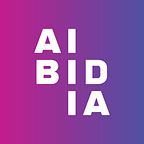Simo Leppanen — Chief Analyst at Aibidia
Multinationals are faced with an increasing level of transfer pricing (TP) compliance requirements amid recent efforts by tax regulators to address international tax challenges. Stricter compliance means taxpayers need to prepare more detailed documentation on intercompany transactions as well as comply with new format requirements as in the case of the Country-by-Country (CbC) reports. Also, tax administrations are increasingly exchanging data with each other. Thus, generating the required volume of compliance documentation and to be sure that the disclosed data is inline all across can be quite a daunting task for in-house TP professionals and advisors alike. In the following, we explore how digital tools can help.
Typical Challenge
The preparation of TP documentation often evolves into a chaotic ad hoc exercise and understandably so. In-house tax professionals likely inherit legacy systems and processes that are difficult to break out from. At the same time, TP rules get more complex and analysis requirements more sensitive to changes in the functional profile of an affiliate. The process involves a lot of manual and error-prone work with bulk of the required background material nowhere to be found when needed.
These administrative and technical challenges result in multinationals losing visibility and control of TP outcomes and ultimately exposing them to audit and adjustment risks.
Advantages of Digitalisation
Digitalising your in-house TP function means using digital tools to automate manual processes and to establish clear structures and standardised processes throughout the TP documentation life cycle: Collecting information, managing data, preparing analyses and modelling scenarios, compiling and submitting files, monitoring outcomes, and communicating with different stakeholders.
Consider the impact of some of the advantages of well-designed digital tools:
Standardised single source of data and structure — Standardizing data collection, storage, and subsequent extraction accelerates different phases of the TP analysis and report preparation and enables a single source of truth.
Automation of routine document compilation — Storing the data in a standardized and structured format enables machine readability of the data and consequently allows automated document generation. Besides, flexibility and customisation can be achieved by allowing free-form editability of relevant parts of the documentation.
Rich and interactive tools for data analysis and stakeholder communication — Analytics tools can help to better understand the underlying data and get the most out of it. User-friendly interfaces can help to manage, monitor, and organise the data to stay in control of both the details and the big picture. Analytics tools can also improve communicating TP needs and outcomes to internal and external stakeholders. Presenting dynamic and interactive data visualisations makes the content easily digestible and fosters informed and fast decision-making valuable also outside the TP function.
Ways to Start Your Digital Journey
Digital tools can be introduced into TP processes step-by-step and alongside existing processes or entire digital systems can be fully implemented in one go.
A gradual step-by-step approach can help in exploring the capabilities of digital tools while keeping digital transformation costs low. Initially, certain sub-processes can be done with digital tools such as visualising transfer pricing risks, preparing the TP documentation, preparing transaction-specific analyses, converting CbC excel files to XML files, etc. It is advantageous to use a single underlying data model for consistent data across all solutions.
Alternatively, a transformative fully-digitalised approach requires more initial time and money investment but brings about the full spectrum of benefits of digitalised solutions. This approach extends into all phases of document preparation and operational transfer pricing management. Fully-digitalised solutions can extract data from internal systems and feed this data into advanced analytics dashboards and automatically generated reports.
Digital TP tools enable TP professionals to manage increased compliance requirements while automating repetitive and error-prone tasks and enable focusing on more value-adding activities. The initial time invested in the setup of a digital environment will be quickly recovered in the following years of document preparation. In the long run, the digitalisation of the TP function will save on compliance costs, minimize risks and contribute to a competitive advantage.
